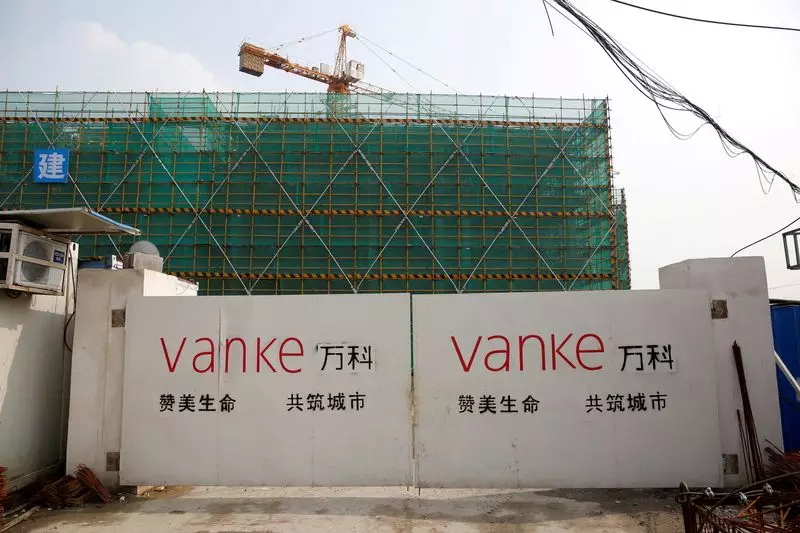As the Chinese property market grapples with a debilitating liquidity crisis that has persisted for five years, the focus now turns towards one of the industry’s most prominent developers—China Vanke. The evolving situation surrounding Vanke, marked by significant financial strain and potential governmental intervention, casts a shadow over the future of real estate in the world’s second-largest economy. The complexities of Vanke’s predicament offer not only insights into the challenges facing developers but also raise questions about the broader implications for market stability and the efficacy of government rescue efforts.
Vanke, recognized as a household name in China’s real estate sector, has long been seen as a bellwether for the industry, owing largely to its wide-ranging projects across major cities. However, recent developments suggest the company may no longer be insulated from the turmoil that has engulfed many of its peers. Reports have emerged indicating that Vanke’s CEO was detained and that the company faces the possibility of a takeover or significant restructuring. Although the report was swiftly retracted, the implications are alarming, signaling a potential collapse of confidence that could ripple throughout the industry.
The financial health of Vanke is now under intense scrutiny with ratings agencies downgrading its status deeper into junk territory, reflecting a deteriorating sales outlook and financial flexibility. Vanke’s staggering debt, which reached approximately 331.3 billion yuan ($45.21 billion) by mid-2023, pales in comparison to the monumental liabilities accumulated by competitors like Evergrande. Yet, analysts warn that Vanke’s troubles could catalyze a further erosion of homebuyer confidence, jeopardizing efforts to stabilize the broader property market.
Historically, Chinese authorities have been reticent to prop up troubled developers, wary of setting a precedent for moral hazard. Nonetheless, the Shenzhen government has ramped up communications with local state enterprises to strategize containment of Vanke’s debt woes. With January 27 marking a crucial repayment deadline and approximately $3.4 billion due in debt obligations within the year, an urgent response appears necessary.
In the context of the recent turmoil, a government takeover of Vanke is being floated as a viable option. Such a move, if realized, would represent an unprecedented intervention in a sector already stifled by crises. Analysts speculate that while a state-backed rescue might not come with fresh capital, it could involve other state enterprise purchases or enhanced access to funding. The need to ensure the completion of pre-sold homes further complicates the matter, as the government grapples with the imperative to bolster buyer confidence amid rising uncertainty.
As Vanke faces intensifying pressures, analysts are divided over the likelihood of a debt default or the extent of government intervention necessary to avert a crisis. A key concern revolves around the precedence a bailout could set; while an overt government rescue may stabilize Vanke, it could also unintentionally weaken the resolve of developers to operate efficiently and responsibly. The risk exists that such measures might foster dependency rather than foster an environment conducive to a sustainable recovery.
Moreover, Vanke’s challenges highlight systemic vulnerabilities within the property sector in China. Even as sales figures have shown some signs of recovery, the experience of Vanke and others suggests that confidence in the market remains fragile. The fallout from a potential default could reverberate through financial institutions, amplifying strains on the already beleaguered banking sector.
As the situation unfolds, the impending decisions regarding Vanke will be pivotal not only for the company but also for the overall health of the Chinese property market. The strategic choices made by the government and other stakeholders could either reinforce or undermine the trajectory of recovery efforts. While the ideal scenario would involve a clear and supportive intervention from the state—effectively signaling a commitment to stabilize the property sector—uncertainties loom large.
Ultimately, Vanke exemplifies the precarious balance between market forces and government intervention in China’s complex real estate landscape. The resolution of its crisis may well dictate the future of the sector, influencing investor sentiment, financing availability, and the broader economic environment for years to come. As the clock ticks down towards vital repayment deadlines, stakeholders watch closely, aware that the forthcoming decisions could herald either a path to recovery or a descent into further crisis.

